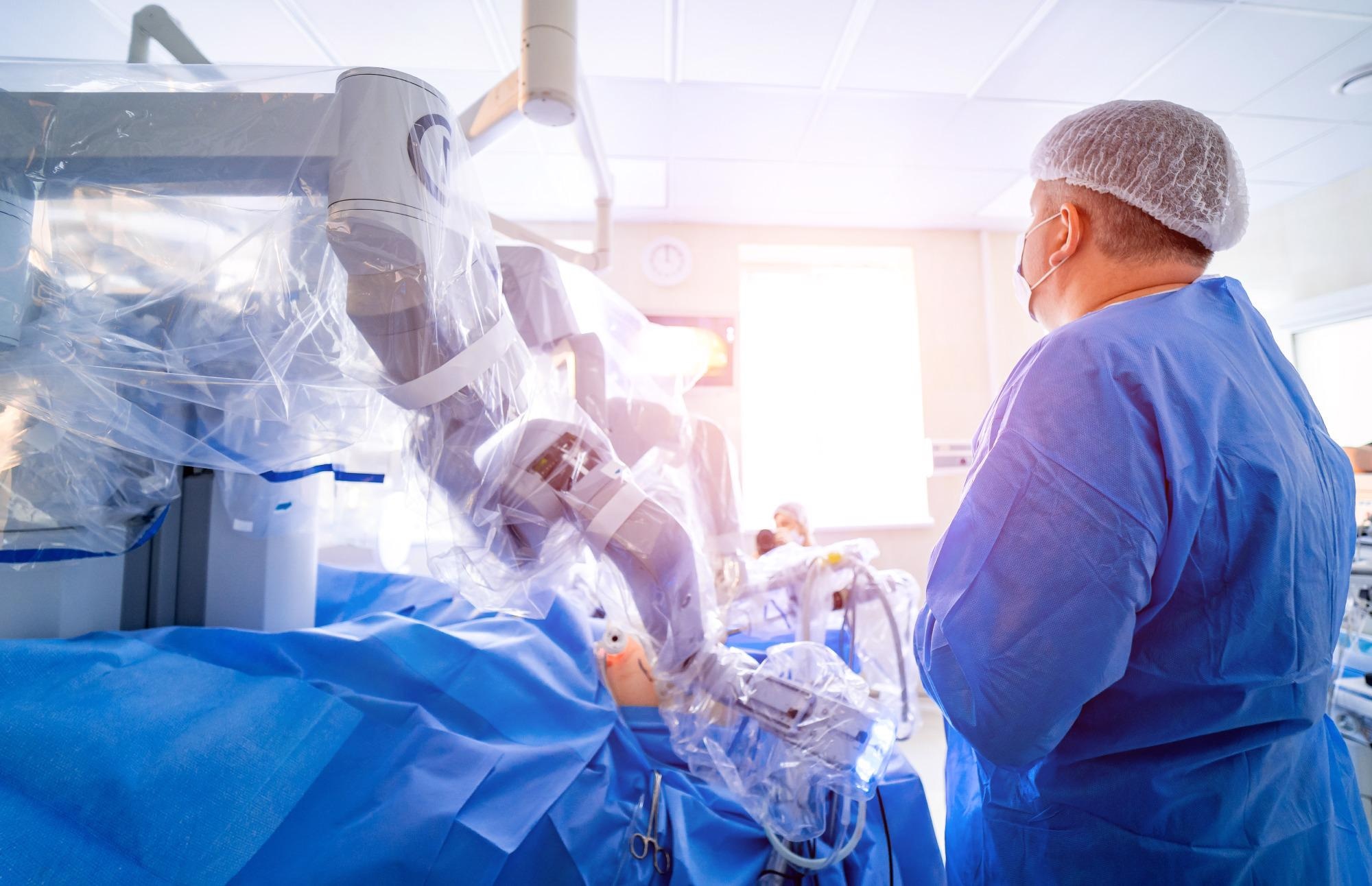Robotic surgery has grown in popularity in recent years and the advent of 3D printing technology has provided innovative ways to deliver robotic surgery education. The use of animals and human corpses in robotic surgery training comes with many financial and ethical challenges that can be solved using synthetic organs.

Image Credit: Shutterstock.com / Terelyuk
A recent literature review entitled “A review of simulation training and new 3D computer-generated synthetic organs for robotic surgery education” published in the Journal of Robotic Surgery by Costello et al (2021) examined surgical simulation models that are being used in robotic surgery education. This article takes a closer look at this review and the key findings of the authors.
What is Robotic Surgery?
Robotic surgery is becoming well recognized for its ability to provide highly accurate and ultra-precise surgical care with less downtime. The most common robotic surgical procedure is subtotal hysterectomy, removal of the uterus and ovaries. The surgeon can perform the procedure quickly and efficiently using minimally invasive techniques.
In addition, a robotic system allows surgeons to make cuts, incisions and stabilize healing tissues with greater precision and efficiency than conventional surgical techniques. While robotic systems have been used for decades in medicine, such as orthopedic surgery and neurosurgery, they are increasingly being applied to surgical procedures as diverse as orthodontics, dentistry and family planning.
How Can 3D Printing Technology Help?
3D printing is a relatively new technology. Unlike traditional injection molding or rapid prototyping, which are used for prototypes only, 3D printing allows for mass production. This means that manufacturing companies can create inexpensive, mass-produced accessories and systems without relying on expensive raw materials. The technology provides the ability to 3D print jewelry, industrial parts, aircraft parts and body parts, making it very popular.
The technology is also being used to create customized organs such as hearts and livers, which could one day be used to treat heart patients in their surgery. Bioprinting can also be used to create replacement arms and legs for amputees, giving them the ability to move again with the assistance of an artificial limb.
The Key Findings and Conclusions from the Study
The aforementioned study by Costello et al. (2021) highlighted in the introduction analyzed the validity and cost-effectiveness of surgeons' methods to practice robotic surgery. The findings highlighted how current research doesn’t support the use of animals and corpses for robotic surgery and they also have logistical, ethical, high cost and infection control issues.
The researchers highlight how 3D printing technology has been a driving force behind the latest developments in synthetic organ model training for robotic surgery.
The study notes that any widespread adoption of simulation training in multiple surgical disciplines will require scalability to meet the growing demand for these technologies. This will enable education in robotic surgery that uses digital and synthetic organs instead of living animals and cadavers to train surgeons.
Robotics has really revolutionized surgical care. When it comes to perioperative care, robotic implants and appliances are becoming the gold standard for repair and regeneration. Many patients are experiencing a better quality of life following surgery, while having similar or even better recovery times following non-surgical treatments.
References
- https://link.springer.com/article/10.1007/s11701-021v-01302-8
- https://www.technologyreview.com/2020/02/11/844866/robot-assisted-high-precision-surgery-has-passed-its-first-test-in-humans/
Disclaimer: The views expressed here are those of the author expressed in their private capacity and do not necessarily represent the views of AZoM.com Limited T/A AZoNetwork the owner and operator of this website. This disclaimer forms part of the Terms and conditions of use of this website.